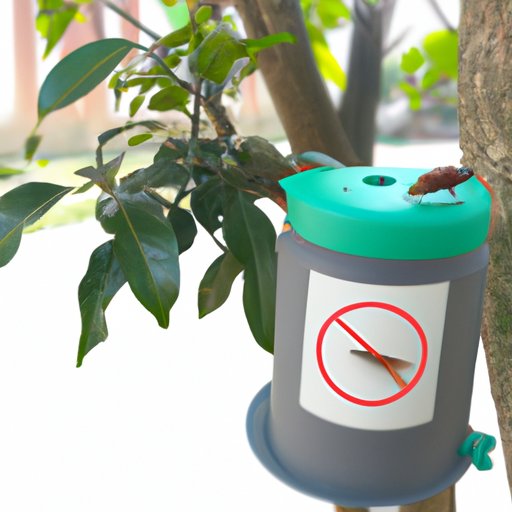Introduction
Bringing outdoor plants inside can be a great way to add a touch of greenery to your home. However, it comes with its own set of challenges. One of the most common issues people face when bringing outdoor plants inside is the introduction of unwanted pests such as bugs. In this article, you will learn how to bring an outdoor plant inside without bugs.
Clean the Plant Thoroughly
The first step in bringing an outdoor plant inside without bugs is to make sure that the plant is clean. This means removing any dirt, debris, or residue that may be present. You can do this by using a damp cloth or a hose. Alternatively, you can use a combination of both methods to ensure that the plant is completely free from any foreign matter.
Hang Insect Traps
Insect traps are another effective way to reduce the chances of introducing bugs into your home. When setting up insect traps, make sure to place them around the plant, as well as in areas where bugs are likely to enter your home. When choosing an insect trap, opt for one that uses pheromones, which are chemicals released by insects to attract other insects.
Check for Bugs Regularly
Once the plant is inside, it is important to monitor it regularly for signs of insect activity. Look for signs such as webbing, eggs, larvae, and adult insects. If you do find any evidence of bugs, it is important to take action immediately to prevent them from spreading. Depending on the severity of the infestation, you may need to consider more drastic measures such as removing the plant from your home.
Neem Oil Spray
Neem oil is a natural pesticide that can be used to effectively control insects. To apply the neem oil, mix it with water in a spray bottle and then spray the entire plant, including the leaves and stems. The neem oil will act as a repellent and help keep the bugs away. It is important to note that neem oil should not be used on edible plants.
Use Sticky Traps
Sticky traps are another effective way to prevent bugs from entering your home. These traps consist of a sticky surface that traps insects when they come into contact with it. To set up these traps, place them in areas where bugs are likely to enter, such as windowsills and doorways. The traps should be checked regularly and replaced when they become full.
Introduce Beneficial Insects
Another way to reduce the chances of introducing bugs into your home is to introduce beneficial insects. These insects, such as ladybugs or lacewings, feed on pests and can help keep the bug population under control. To introduce these beneficial insects, you can purchase them from a local garden center or online retailer. Once purchased, release them near the plant and let them do their work.
Isolate the Plant
Finally, it is important to isolate the plant from other plants while it is inside. This means keeping it away from other plants and reducing the amount of contact it has with them. This will help reduce the risk of introducing bugs and other pests into your home. The duration of the isolation period will depend on the type of plant and the severity of the bug infestation.
Conclusion
Bringing an outdoor plant inside without bugs is possible if you take the necessary precautions. Make sure to clean the plant thoroughly, hang insect traps, check for bugs regularly, use neem oil spray, set up sticky traps, and introduce beneficial insects. Finally, remember to isolate the plant from other plants while it is inside. With these steps, you can successfully bring an outdoor plant inside without introducing any bugs.


